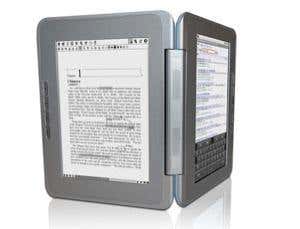
What Is The Use Of A Smart Book – Innovation is our regular column that highlights emerging technological ideas and where they may lead. There’s been no shortage of new mobile computer designs being shown off at the 2010 Consumer Electronics Show (CES) in Las Vegas, Nevada, this week. For established categories such as laptops and their pared-down alter ego the netbook, the advances are largely predictable: thinner, lighter and more powerful.
But grappling for attention in the thronged conference halls, several computer makers have been loudly proclaiming that what consumers really need is a new class of device altogether: the smartbook.
The smartbook, its promoters suggest, will fill a gap in the market between smartphones and netbooks. But does such a gap exist?
The smartbook makers are betting that netbooks – small laptops optimized for mobile internet browsing – are still too large and too slow to boot up for users to carry everywhere they go, whereas existing smartphones are too small to run rich media satisfactorily and not powerful enough for serious applications.
However, judging by the Cambrian Explosion of devices tagged as smartbooks at CES, there is little agreement about what constitutes such a device.
The form factors range from the familiar – swivel-screen netbooks and over-sized cellphones – to the novel, such as a dual-screen device from Virginia-based Entourage, which combines a touch-sensitive e-reader with a multi-touch netbook -style screen.
Inspired by Apple
Elsewhere, so-called “slates” were proving popular, undoubtedly hoping to cash in on the buzz surrounding Apple’s expected release of such a machine. Mostly, the slates can connect to the internet and other devices via Wi-Fi and Bluetooth, and some can communicate via 3G too.
The smartbooks being shown off were relatively powerful. Typically they contain processors such as Intel’s Atom, Marvell’s Armada series and Qualcomm’s Snapdragon, which run at speeds of around 1 gigahertz – comparable to a few-years-old laptop. This means the devices can run fully featured operating systems and applications, as opposed to the stripped-down OSes and apps of smartphones. The processors are relatively energy efficient, which should allow batteries to last between 7 and 10 hours, depending on what applications are running.
Many of the Windows devices, such as HP’s Slate, run full versions of Windows 7. Others, such as Lenovo’s Skylight, run customized versions of the open-source operating system Linux.
What are they good for?
But it’s far from certain that these devices will attract buyers. Even after playing with them, this reporter still wasn’t entirely sure what they would be used for. Asking the on-stand reps what smartbooks would be good at, there were as many suggestions as there were designs. Most said they can be whatever a person wants them to be: an oversized BlackBerry or iPhone, a portable video device, an advanced e-reader, a dedicated web-surfing, instant-messaging machine or maybe just a fancy digital photo frame. Some said the products were in response to customer demand, others said they are using them to test the waters to see if there is any interest.
With screen sizes too small for prolonged bouts of work, the most obvious use seems to be playing media and accessing the internet. Even though most can run standard software, a touch-screen user interface doesn’t seem a great way to navigate a conventional Windows-based environment, at least on a 5- to 9-inch screen.
They may be useful in certain professional settings, such as for nurses or teachers who need to input data quickly while moving around. The “dual books” from Entourage and Spring Design could be good for students who don’t want to carry a backpack full of textbooks. The rest of us might use them to watch videos while on the train.
The most telling description was that the smartbook would be a companion to, rather than a replacement for, smartphones, e-readers and netbooks. This of course raises the obvious question: how many gadgets a person will be willing to carry around?…